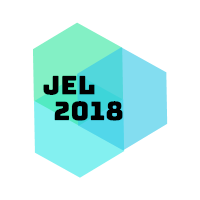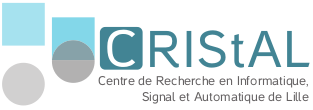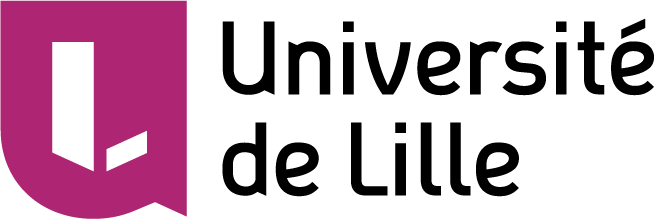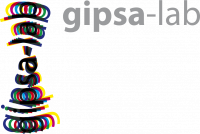|
Annonce Bienvenue à la Journée Exceptionnelle Lilloise ! Quand : le vendredi 28 septembre 2018 Où : Amphi B de Lilliad sur le campus scientifique de Villeneuve d'Ascq La journée aura lieu de 10h à 17h au Learning Center Lilliad, sur le campus scientifique de Villeneuve d'Ascq. Accueil à partir de 9h30. Cette journée scientifique et éclectique propose un programme exceptionnel :
Le repas du midi est offert. Merci de vous inscrire impérativement pour la gestion logistique : voir l'onglet "inscription". Le site est facilement accessible depuis les gares de Lille Flandres et Lille Europe (20min en métro, ligne 1 dir. 4 Cantons) et en taxi depuis l'aéroport (15/20min). Résumés des présentations (en anglais) :
Patrick Flandrin - Drawing sounds: Fourier, Kœnig, and Scott
Abstract: In his seminal work, first published in 1811, Joseph Fourier was primarily concerned with the building of an analytic theory of heat, but it was realized soon after that the expansion methods he developed for this purpose had potential applications far beyond, in physics as well as in mathematics. This was in particular the case for sounds with, in the middle of the XIXth century, a quest for graphical representations in time and/or in frequency, thanks to dedicated devices. One apparatus designer, Rudolph Kœnig, was particularly instrumental in such studies, in the two domains. On the one hand, he built an actual Fourier analyzer based on resonators, manometric flames and mirrors. On the other hand, he collaborated with Édouard-Léon Scott de Martinville on his project of a « phonautograph » that, in 1857, permitted the first ever recording of a human voice in the form of a graph on a paper sheet. Whereas Scott’s objective was transcription and not restitution, some of his sound graphs have been recently scanned and digitized, allowing us to actually hear him singing. Beyond celebrating this year the 250th birthday of Fourier and reviving the forgotten memory of Scott, intertwining those complementary approaches via Kœnig is believed to offer a way of revisiting issues such as the physical significance of Fourier modes, or the questionable necessity of their use as features in modern recognition systems.
Philippe Réfrégier - Two co-design examples in optical microscopy limited by photon noise. Abstract: We will illustrate through two optical microscopy examples currently under study at the Fresnel Institute, the contribution of estimation and decision statistical techniques. The first example concerns polarization-resolved second harmonic generation imaging, while the second one is relative to optically compressed Raman imaging with binary filters.
Titre : Deux exemples de co-conception en microscopie optique limitée par le bruit de photons. Résumé : Nous illustrerons au travers de deux modalités de microscopie optique actuellement en cours d’étude à l’Institut Fresnel, l’apport des techniques statistiques de l’estimation et de la décision. Le premier exemple analysé sera celui de l’imagerie de seconde harmonique résolue en polarisation alors que le second concerne l’imagerie Raman compressée optiquement avec des filtres binaires.
Tulay Adali - ICA and IVA: Role of Diversity and Application to Data Fusion Abstract: Based on a simple generative model, data-driven methods can minimize the assumptions on the nature of data, and hence have been increasingly attractive for application to an array of problems where the underlying relationships are hard to characterize. Independent component analysis (ICA), in particular, has been a popular solution and an active area of research. This talk reviews ICA and its extension to multiple datasets, independent vector analysis (IVA), under a broad umbrella that allows one to simultaneously consider multiple types of diversity—statistical property—to achieve an essentially unique decomposition. An important message is that by using multiple types of diversity jointly, one can identify a broader class of signals, which includes i.i.d. Gaussians in the case of IVA. Data fusion is introduced as an important application area for ICA and IVA, highlighting the opportunities as well as the challenges that remain in the area.
Gabriel Peyré - Sinkhorn Entropies and Divergences
Abstract: Comparing probability distributions is a fundamental problem in data sciences. Simple norms and divergences, such as the total variation and the relative entropy, only compare densities in a point-wise manner and fail to capture the geometric nature of the problem. Maximum Mean Discrepancies (MMD, Euclidean norms defined through a kernel) and Optimal Transport costs (OT) are the two main classes of distances between measures that provide some geometrical understanding, metrizing the convergence in law. In this talk, I will present the Sinkhorn divergences, which is a new family of geometric divergences that interpolates between MMD and OT. These divergences rely on a new notion of metric entropy, which ensures its positivity and metrization of the convergence in law. On the practical side, these divergences can be computed on large scale problem thanks to Sinkhorn's algorithm, and finds numerous application in imaging and machine learning.
This is a joint work with Jean Feydy, Thibault Sejourné, Francois-Xavier Vialard, Shun-ichi Amari and Alain Trouvé.
Marianne Clausel - Gaussian random fields and anisotropy
Abstract: Textures in images can often be well modeled using self-similar random fields while they may at the same time display anisotropy. The present contribution thus aims at studying jointly self-similarity and anisotropy by focusing on anisotropic selfsimilar Gaussian fields. We study a class of anisotropic and local self similar Gaussian random fields, and relate the orientation of the fields to the anisotropy properties of the texture. Notably, we use this preliminary study to define a new class of Gaussian fields with prescribed orientation. Thereafter, we propose a practical procedure to perform the synthesis of these textures. Joint work with K. Polisano, L. Condat and V. Perrier. |







